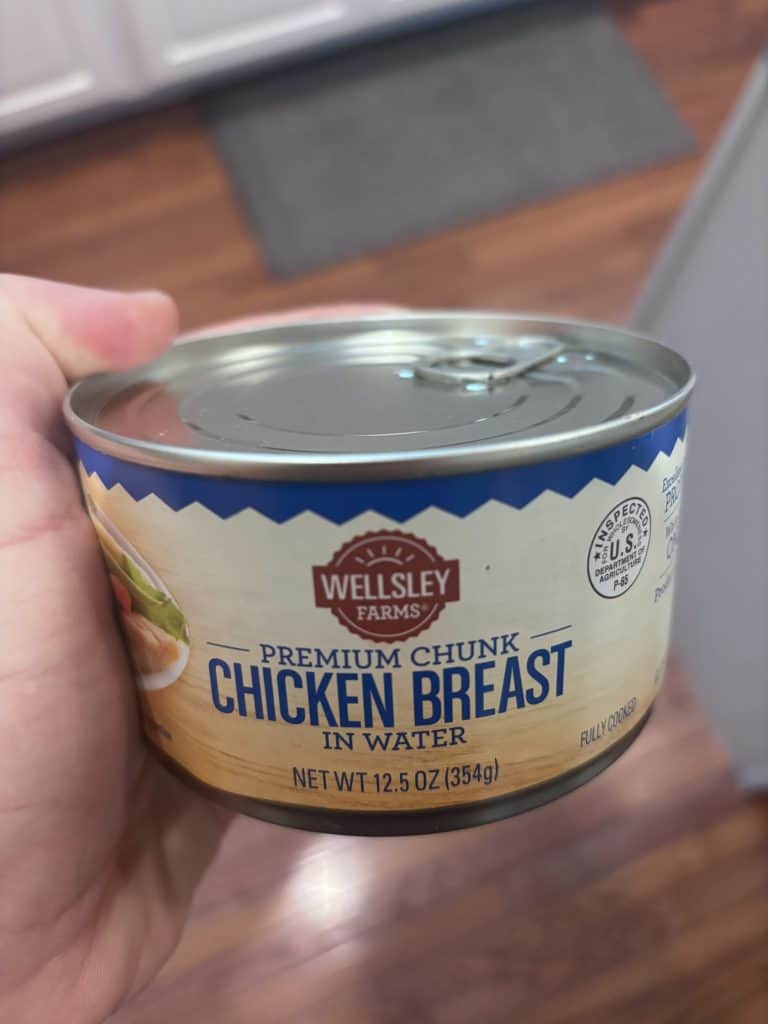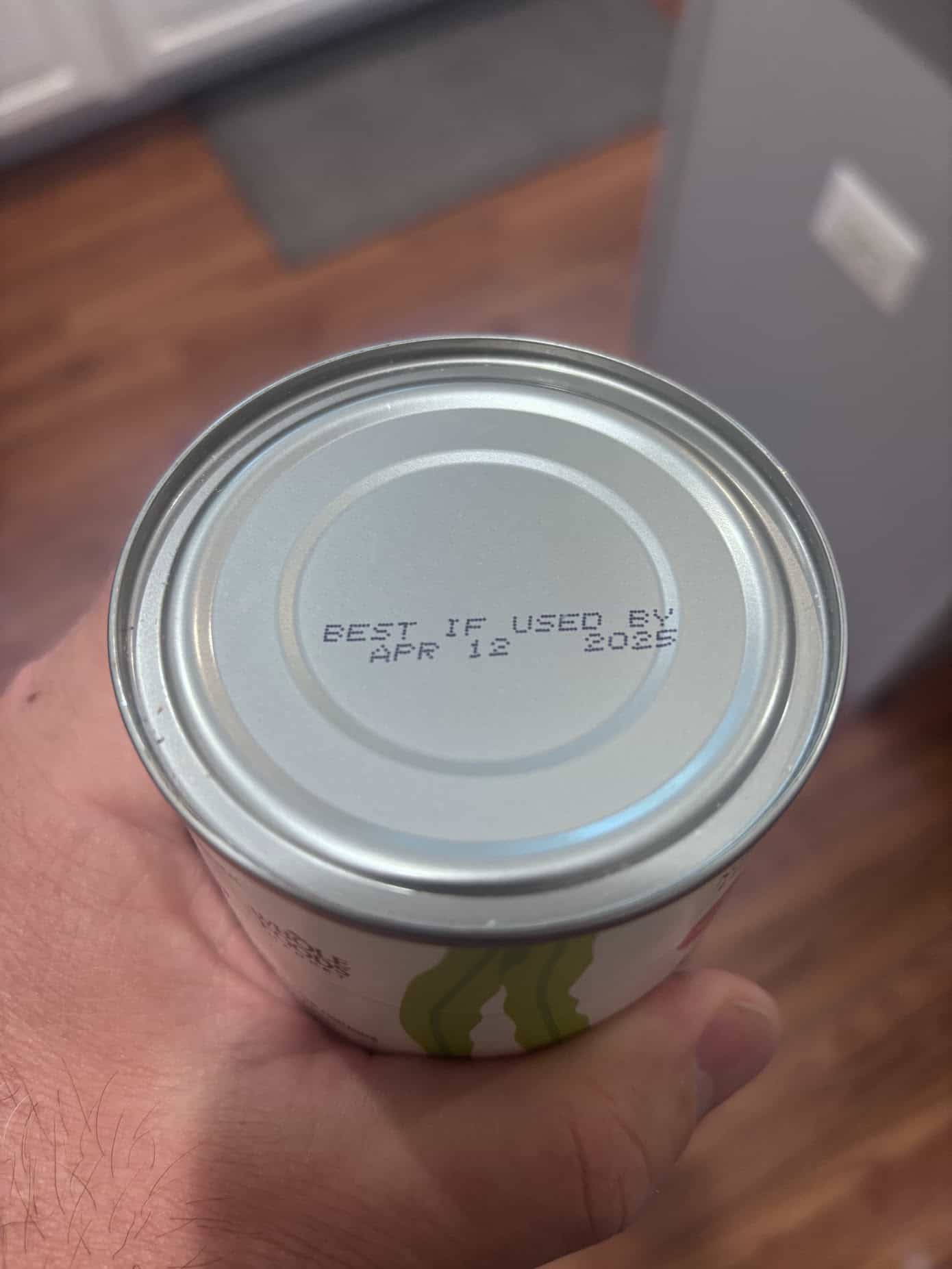“Best by” or “best before” dates are one of the most misunderstood parts of food packaging.
Many people think they mean the food expires on that exact date and toss it out—but that’s not always true.
When it comes to pantry staples like canned chicken, peanut butter, tomatoes, and corn, the date is more about quality than safety.
Here’s how long you can safely keep these foods and what to watch for.
What “Best By” Really Means
A “best by” date is not the same as an expiration date. It’s the manufacturer’s suggestion for when the food will taste and look its best.
Many foods—especially canned items—are perfectly safe well beyond that date if stored properly.
The key is checking the condition of the container and the food inside before deciding whether to use it.
How Long These Foods Last
Canned Chicken Breast

Canned chicken can typically last 3–5 years past the best by date if kept sealed and stored in a cool, dry place.
Always check for damage, bulging, or unusual odor once opened before eating.
Peanut Butter

Peanut butter is shelf-stable but does slowly go rancid over time.
An unopened jar can last up to a year past the best by date, while opened peanut butter should be used within 3–6 months for best flavor and freshness.
If it smells off or tastes bitter, it’s time to toss it.
Whole Peeled Tomatoes

Canned tomatoes usually keep for 1–2 years beyond the best by date.
The flavor may fade slightly, but they’re still safe as long as the can isn’t bulging, rusting, or leaking.
Acidic foods like tomatoes don’t last quite as long as other canned goods, so check carefully before use.
Canned Corn

Canned corn can remain safe for 1–2 years past the best by date when stored correctly.
Texture and flavor may decline slowly, but safety depends mainly on the can’s condition. Discard any can that looks compromised.
Storage Tips for Canned Goods
- Keep cans and jars in a cool, dry spot away from heat and sunlight.
- Store cans upright to protect the seals.
- Rotate your stock: place new items in the back and use older ones first.
- Don’t eat from containers that are dented, bulging, rusty, or leaking.
- Once opened, transfer leftovers to a sealed container and refrigerate.
Bottom Line
“Best by” dates are guidelines, not hard rules.
With proper storage, canned chicken can last several years, peanut butter about a year, and canned tomatoes and corn up to two years beyond the printed date.
The real test is the condition of the food and its container.
Using good judgment and safe storage practices helps you save money, cut down on waste, and keep your pantry stocked with confidence.
The Difference Between “Best By,” “Sell By,” and “Use By”
Not all food date labels mean the same thing. Knowing the difference can save you money and reduce wasted food.
A “best by” date is simply the manufacturer’s estimate of peak flavor and texture. The food is usually still safe afterward if stored properly.
A “sell by” date tells the store how long they should keep the product on the shelf. It isn’t a safety deadline for consumers.
A “use by” date is the most strict and usually applies to highly perishable items like dairy, deli meat, or baby formula. It’s best to treat this one as a cutoff.
But there’s more to the story than just those dates. Here are a few other things worth knowing before you toss food too soon.
Foods That Outlast the Label
| Food | Typical Shelf Life Past “Best By” | Notes |
|---|---|---|
| Canned Beans | 2–5 years | Check for can integrity before use |
| Canned Soups | 2–4 years | Texture may soften but remains safe if sealed |
| Canned Tuna | 3–5 years | Quality stays high if kept cool and dry |
| Spam | 5+ years | One of the longest-lasting canned meats |
| Canned Tomatoes | 1–2 years | Acidic foods shorten can lifespan |
| Canned Pineapple | 1–2 years | Acid slowly breaks down can lining |
| Citrus in Cans | 1–2 years | Acid weakens can lining faster |
| Rice (dry, stored airtight) | 4–5 years | Very stable if stored in sealed container |
| Flour (stored airtight) | 1–2 years | Can go rancid if exposed to air or moisture |
| Oats (stored airtight) | 1–2 years | Keep airtight to avoid pests and moisture |
Some canned foods are known to last far longer than people expect. Items like beans, soups, tuna, and spam can often remain safe for several years.
Acidic foods such as tomatoes, pineapple, and citrus don’t keep as long because the acids slowly break down the can lining. These are worth checking more carefully before use.
Dry goods like rice, flour, and oats also have long shelf lives when stored in airtight containers. Rotating stock is still smart, but many staples are good for years past the printed date.
How to Spot Spoiled Canned Food
A good rule is: when in doubt, throw it out. Cans that are bulging, leaking, or badly dented should never be eaten.
Once opened, check for off smells, unusual textures, or food that looks discolored. Even if the date looks fine, spoiled food will usually give you clear warning signs.
Rust around the lid or seams is another red flag. If bacteria has compromised the seal, it’s not worth the risk.
Storage Mistakes That Shorten Shelf Life
Where you keep your canned goods matters just as much as when you bought them. Storing cans in a hot garage, attic, or damp basement can cut their shelf life in half.
Direct sunlight, heat from appliances, or moisture can weaken seals and cause food to spoil faster. Always choose a cool, dry cabinet or pantry.
Once a can is opened, never leave the food inside the metal can. Transfer it into a glass or plastic container with a lid and refrigerate right away.

